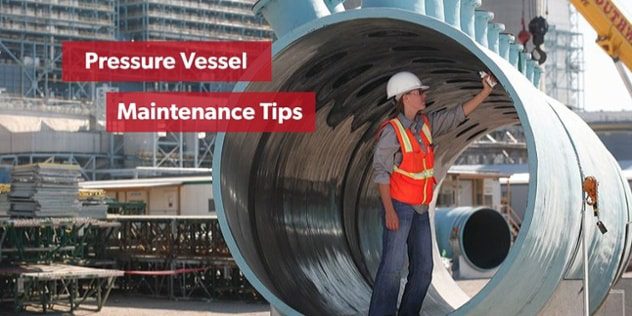All industrial equipment requires periodic maintenance to ensure the unit is in proper functioning condition. This is especially true with pressure vessels as the operating conditions in which these vessels are subject to can generate wear and other concerns under normal conditions.
While maintenance coincides with the inspection program for pressure vessels, maintenance is not confined to corrective measures or to correct operating deficiencies. To prevent reoccurring issues, periodic maintenance should take place. Here are some maintenance tips that will help keep your pressure vessel in good operating order and your maintenance practices proactive instead of reactive.
Replace When Necessary
Valves, pumps and other equipment that are attached must undergo periodic inspection to detect potential concerns. However, some industries practice a “replace when needed” maintenance program versus as “replace when necessary” maintenance program. At first, the difference might appear academic between the two types, however, a “replace when needed” program allows wear to exceed 75 percent or more before replacing the part but a “replace when necessary” allows a wear of up to only 50 percent. The “replace when necessary program” means there are more adjustments for the operator in preparation for when there are delays in the maintenance cycle or problems with logistics in obtaining the replacement. Thus preventing failures before they occur.
Inspect It Anyway
All pressure vessels are required to undergo inspection. However, each inspection should be as thorough as possible. Even if it was just inspected, inspect it anyway. Pressure vessels operate under dynamic conditions and loads and while a previous inspection did not reveal any concerns, the situation may have changed. This can be especially true if recent maintenance has been undertaken as this could have changed the conditions of a seemingly unrelated section. A general rule of thumb is; “If you think you don’t have to inspect it. Then you should inspect it.”
Follow All Safety Protocols!
At first glance, it might appear obvious, however, maintenance is often when safety procedures are allowed to lapse for the sake of maintenance. Therefore, extra vigilance should be maintained during the maintenance cycle to ensure that all protocols and procedures are followed. This includes enacting any follow up measures at the completion of the cycle. In addition, during the maintenance cycle, all safety features on the equipment should be inspected and tested to make sure they are also in functioning order.
A proper inspection regimen with a rigorous maintenance schedule will not only save your company money over the life of the pressure vessel but it will also go a long way to reducing any potential liability during the operation of the pressure vessel or tank. Maintenance is often one of the first sectors to be considered for reduction in a budget crunch but history has shown the cost effectiveness of a maintenance always policy


 ASME Informational
ASME Informational Tank Materials
Tank Materials